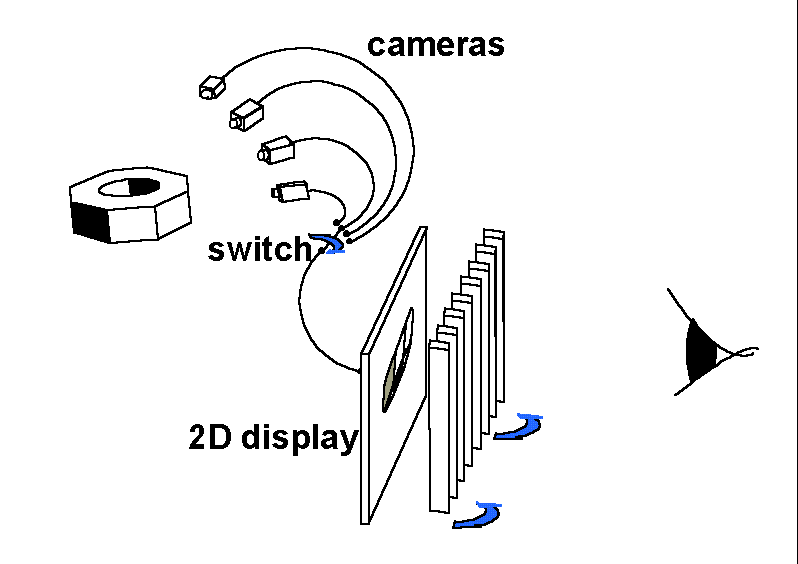
How does autostereoscopic pixellation work, and is the result a real three dimensional image?
| Imagine someone is looking at a solid object through a set of louvres (or "venetian blinds") arranged vertically. Imagine further that the louvres are rotating from side to side, and doing this so rapidly that the louvres appear blurred. How does the person looking at the solid object know it is three dimensional? Firstly they can use their bifocal vision - each eye sees a different view of the object through the louvres - or secondly the observer can move from side to side so as to see different views of the object from different positions. |  |
| Suppose now that someone pokes a screwdriver into the louvres so that they stop rotating from side to side and become fixed. How does the person looking at the solid object know now that it is three dimensional? They can try using bifocal vision, but if one eye can see through the louvres, then the other one cannot. They can try moving from side to side, but as soon as they move away from the position where they can see through their louvres, their line of sight will be blocked. In fact, the person looking through the louvres would not know if the solid object had been replaced by a picture of the solid object. |
| Instead of a picture, a video display is put behind the louvres, and connected to one of an array of video cameras pointing at the solid object. The louvres are then rotated slightly and the display is switched to the adjacent video camera. This process is repeated until the display has switched to each of the video cameras in turn, then the switch and louvres are reset and the process repeated. If this cycle continues very quickly, the movement of the louvres will be a blur. How now does the viewer know that the image at which they are looking is not a three dimensional object? With bifocal vision they will see a different image with each eye as would be expected with the original object, and if the viewer moves their head from side to side then what they see will change with point of view. In principle there is no way of distinguishing the televised image from the original, so it is a real three dimensional image. |  |